Way back in early 2007 my imagination was caught by pictures of Richi Oliver sailing his Prowler 13 kayak with a Pacific Action 1.5 metre sail down on the south coast.
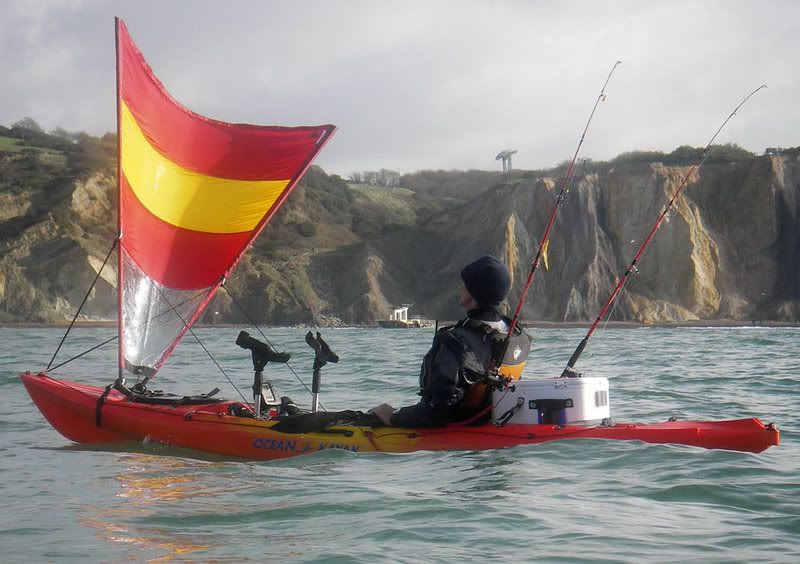
I enquired about them and not long after obtained my first one which I fitted to my Prowler 15 in May.
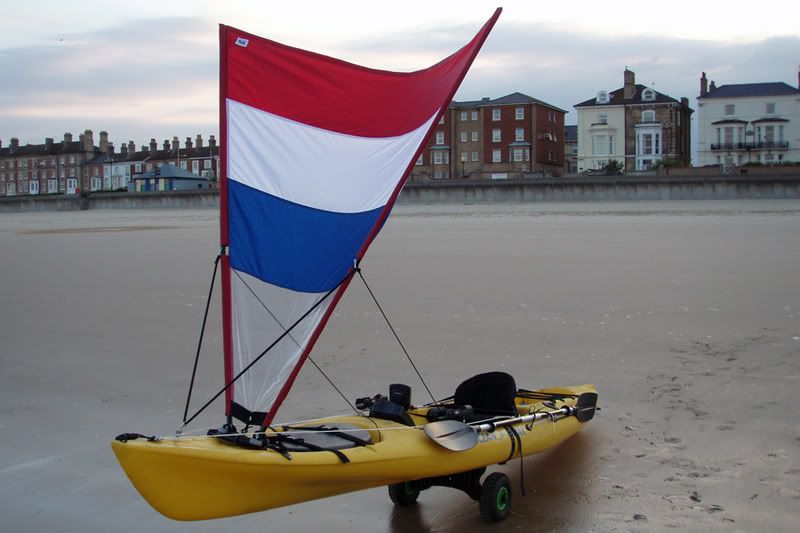
Of course I was very keen to try it out and launched for a quick blast with a friend who had been a keen windsurfer as he might be able to figure out how to use it and let me know. He proceeded to do a beach start and subsequently sail out and back in a triangle. He then instructed me how to do so and I did the same – it was as easy as falling off a log.

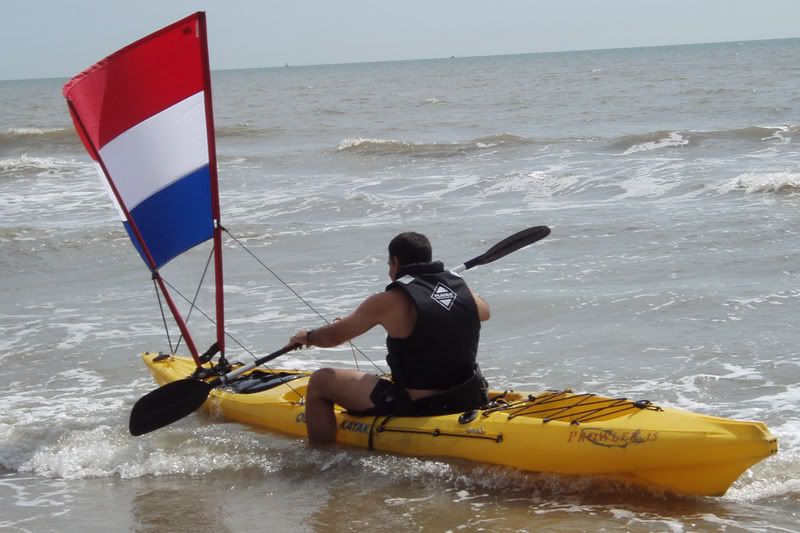
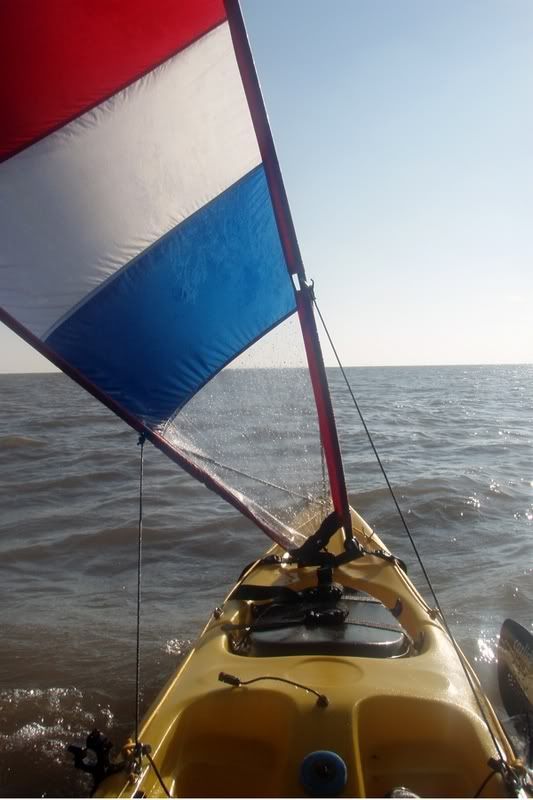
The thinking behind the Pacific Action system is not to produce something that turns a kayak into a sailing boat akin to a dinghy or suchlike; instead, it is thought of as an enhancement to kayaking which allows it to be used in conjunction with a paddle to assist on long journeys and expeditions although in my usage the paddle has been used almost exclusively as a rudder to steer with or to brace in heavy sea, the speed generated from the wind being sufficient to propel me at a pace equal to or greater than paddling speed in all but the slightest winds which I would generally not raise the sail in anyway. The beauty of the system is that the sail is very forgiving and thus complete novices can be up and running in no time with no training, as seen in the following photographs by a complete novice on his first go:
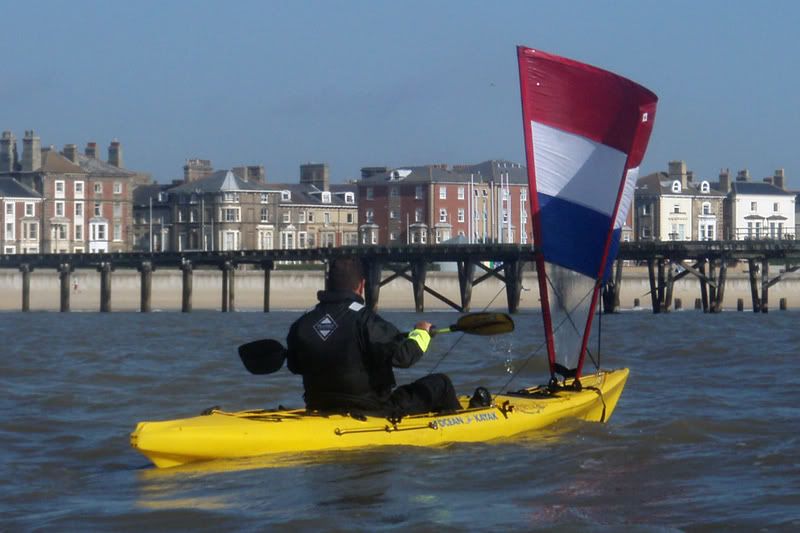
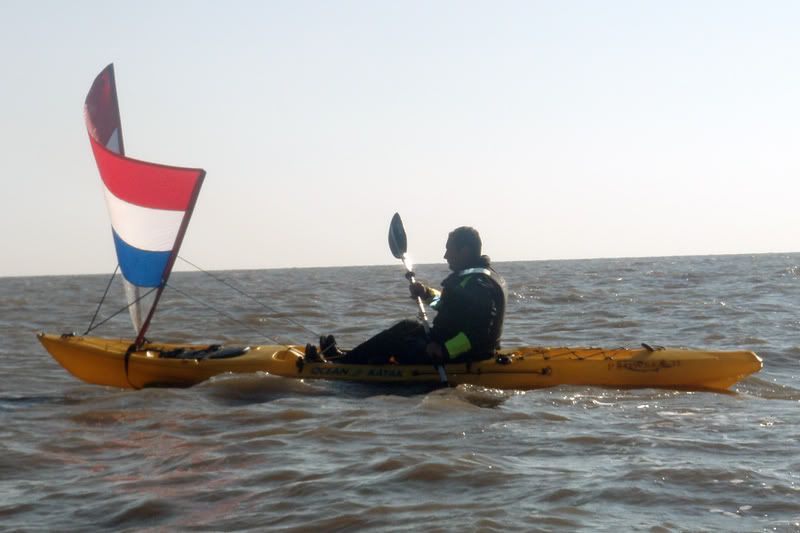
Back to 2007. An evening or two after my first attempt off the beach I decided to go out with the sail for a spot of fishing off Lowestoft South Beach.


Unfortunately there was almost no wind and with me raising and lowering the sail a few times and then sitting at anchor fishing somebody clearly thought I was in distress. I know this as the lifeboat told me once it had steamed out from its station the other side of the pier (approximately 300 metres as the crow flies!) That was when I started to think about sizing.

The winds that year were predominantly light and the opportunity to use the sail was severely limited by this. As much fun as it was when conditions were right I didn’t feel I was getting enough use out of it and it remained furled for most of the summer.
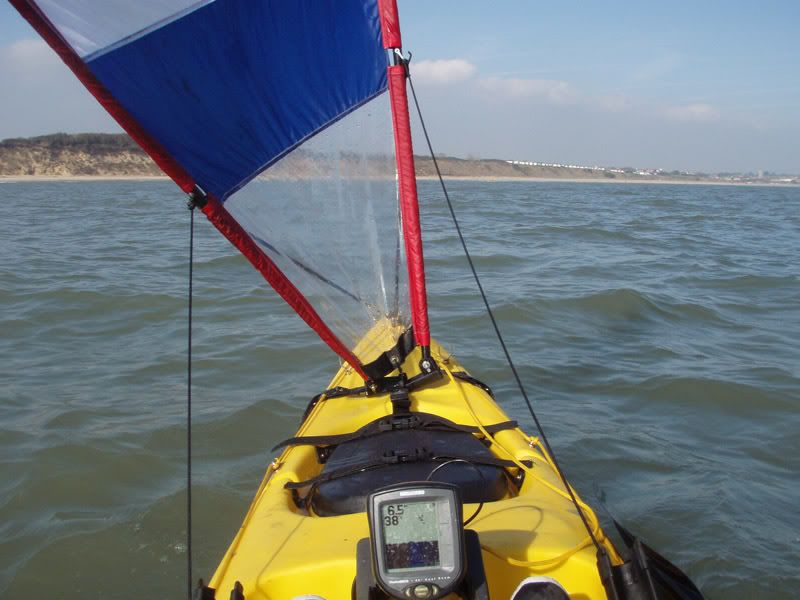
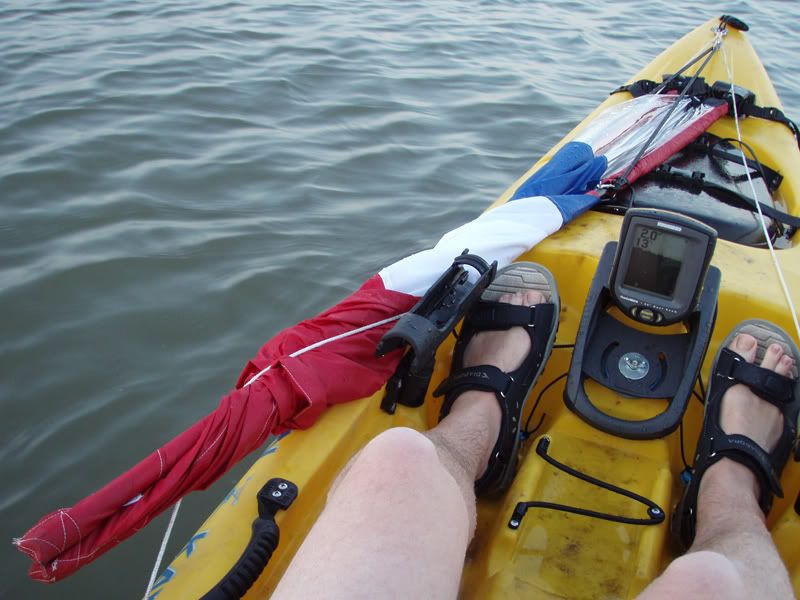
In September of that year I began fitting out a Trident 15. I rigged it for the sail but then decided that I didn’t want to be hampered by light winds so sold the 1.5 metre sail to a friend and ordered myself a 2.2 metre replacement.
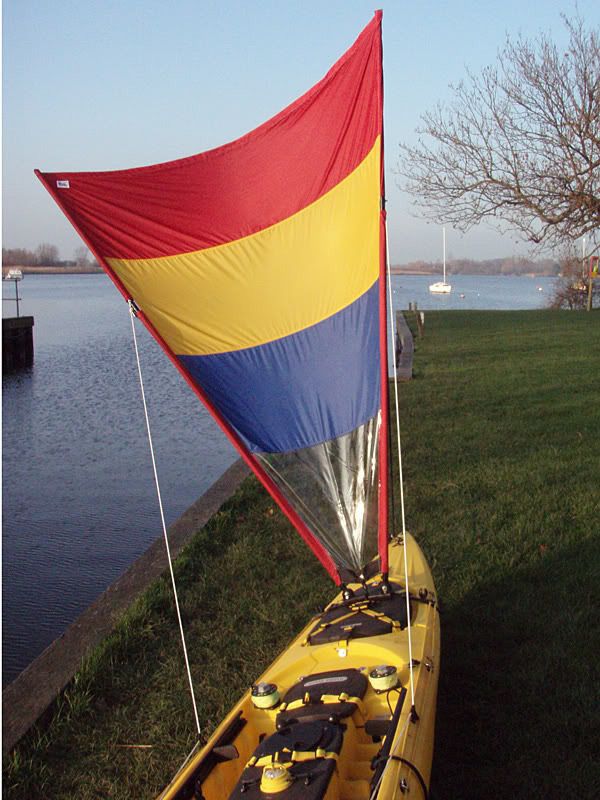
On its arrival I fitted it and became aware of a slight error in my judgement. The additional length of the poles meant that it reached quite far into the cockpit, certainly further than the 1.5 metre sail, and this could hamper my fishing to some degree if I was using it for an offshore trip. However, this was not a major consideration at this time and, having also fitted a rudder, I took it out onto a local Broad in a high wind to see how it fared. It worked brilliantly! I shot across the water at over 10 knots, hanging on for dear life, until I reached the other side. I’d sailed firstly across and then slightly off the wind but was now faced with a half-mile paddle back to my launch spot in a 35mph wind coming straight for me. As it took me so long to get back I decided not to do it again but I had learnt quite a bit in that short time about the capabilities of the sail and the next time that I used it on the Broad, in a lighter wind, I caught a pike while trolling lures behind me.
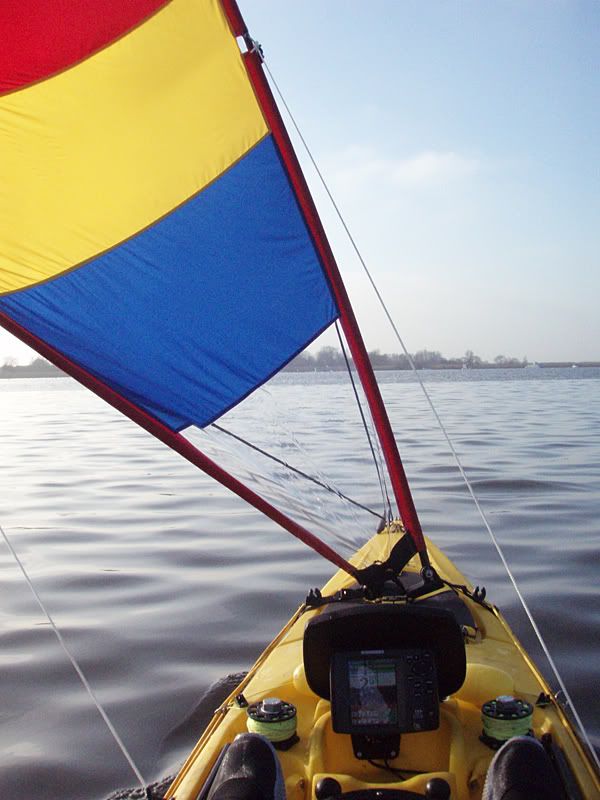
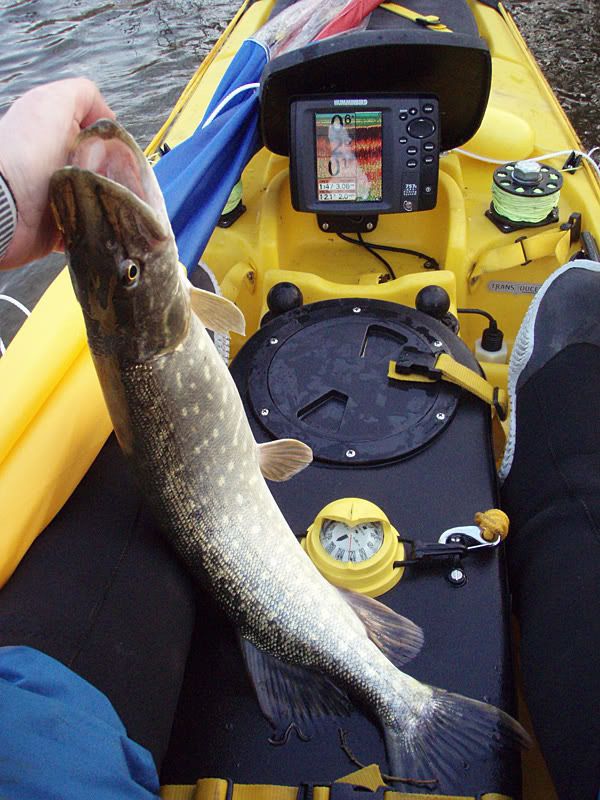
The next time it got used in a decent wind was at sea. I had paddled down towards Kessingland from Lowestoft, a couple of miles south, with the tide and fished for a few hours.

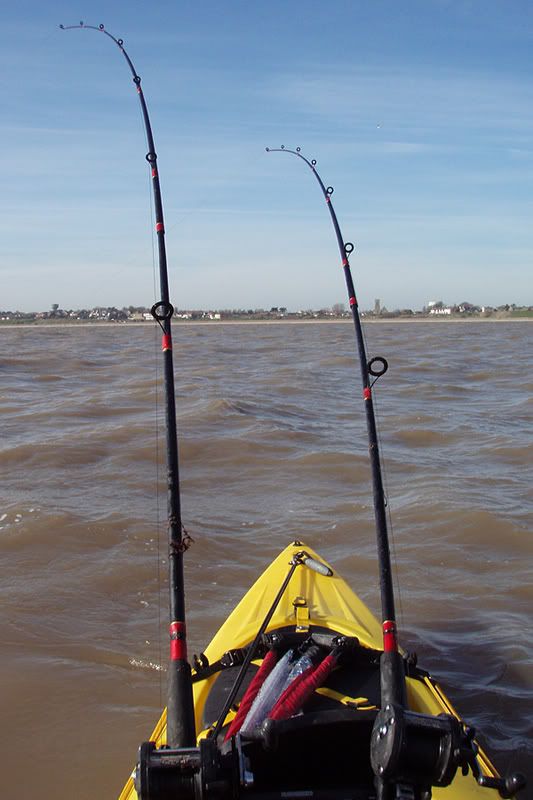
As the tide slackened off before turning – at which point the fishing died – I up-anchored, stowed my fishing gear and raised the sail to head home. I picked up speed quickly but my relative inexperience coupled with the larger sail made things tricky. I was outrunning the short, choppy waves and the rudder was having difficulty biting.
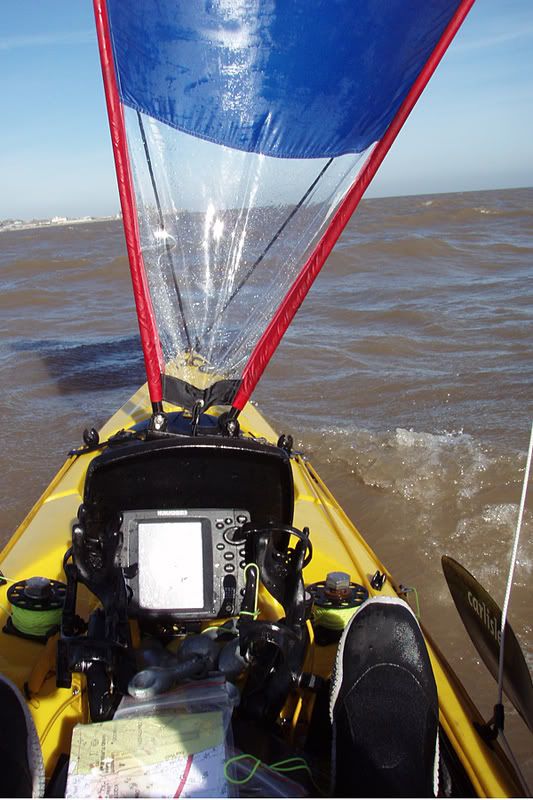
I was also having to run at angles to the wind which saw me zig-zagging in and out from the shore and often getting caught in the trough between the waves. Frankly I was making a hash of things and getting soaked! Still, it was fun and the sail brought me home with a huge adrenalin-induced grin on my face.
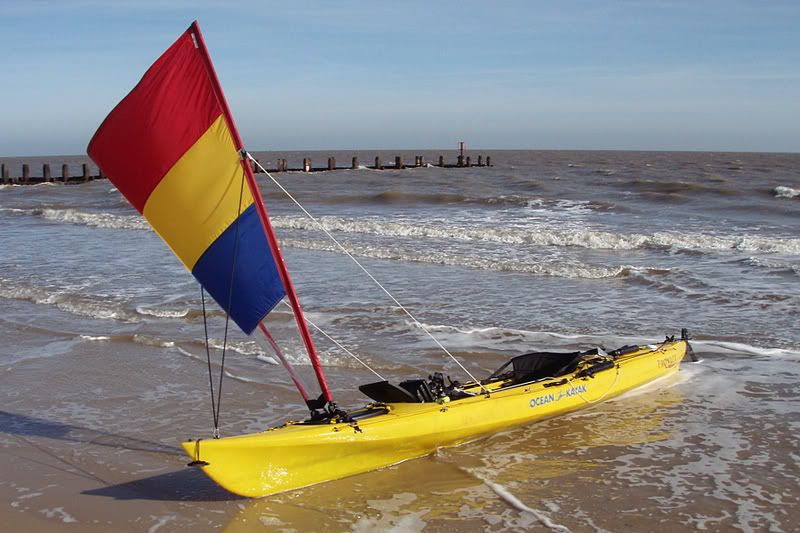
It was ironic really, but now that I’d changed to a larger sail the wind seemed to be generally stronger than it had been the year before – either 2007 was a low-wind year at Lowestoft or 2008 and 2009 were particularly strong. I’m no meteorologist so all I knew was that this time around the opportunity to use my sail was often negated by windspeeds for which it was overpowered. Of course, strong wind doesn’t affect everyone the same and it was back to the instigator of my sailing when I observed Richi (with a smaller sail than mine) in a high wind (he only furled it to speak to me!)
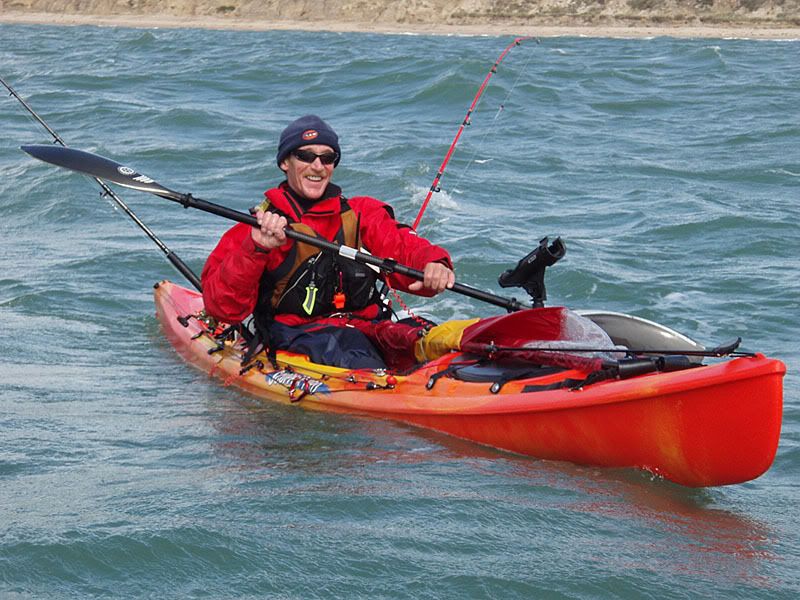
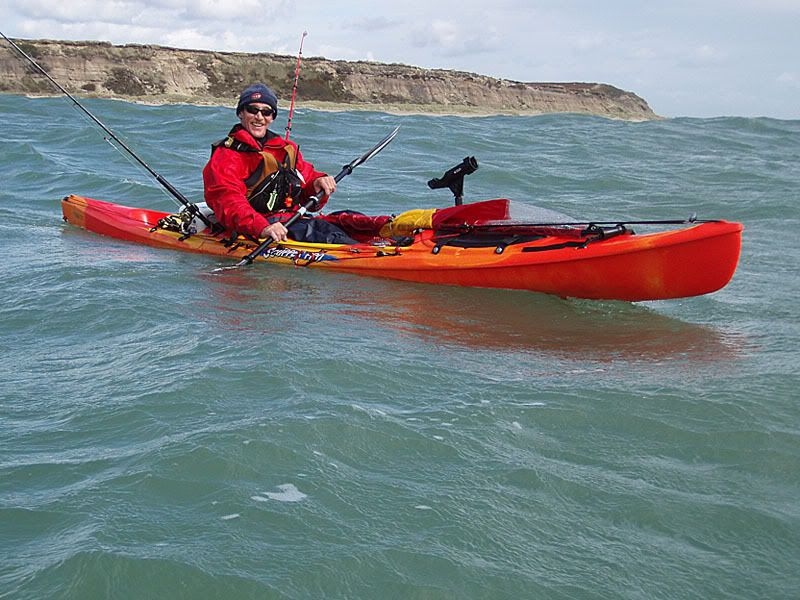
Coupled with an increasing amount of local kayak anglers with whom I fished regularly I often didn’t fit it to my kayak as I felt it was antisocial to go flying off without people I was supposedly with and so it sat in the corner of my study gathering dust for most of the time with me forgetting just how much good, clean fun it was, with only the odd outing to remind me, or friends, that I still had it.

Shoot forward to a few weeks ago. With a friend having made his own sail it occurred to me that I ought to get mine out again. It was only then that it occurred to me that I could reduce the size of it easily as the mast was made from three poles on each side while the smaller ones were made with two. I looked at it and at the smaller versions of the sail and then ordered some Ripstop nylon which I marked out, cut and had sewn up for me (thanks Mum!). It turned out, by chance, that it was exactly the same size and shape as the 1 metre sail. I fitted it to my Scupper Pro and waited for the weekend for a couple of brief light-wind test runs during fishing sessions which would also allow me to evaluate how much space it’d leave me for fishing.
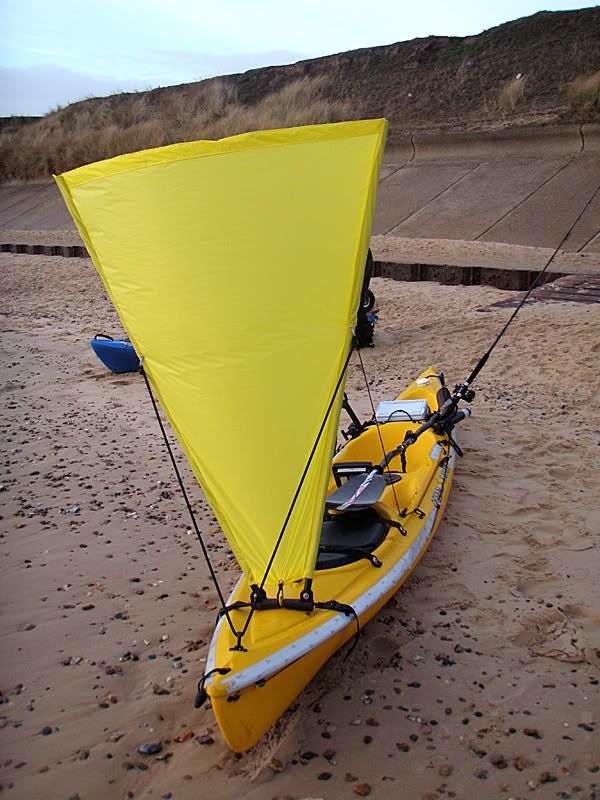
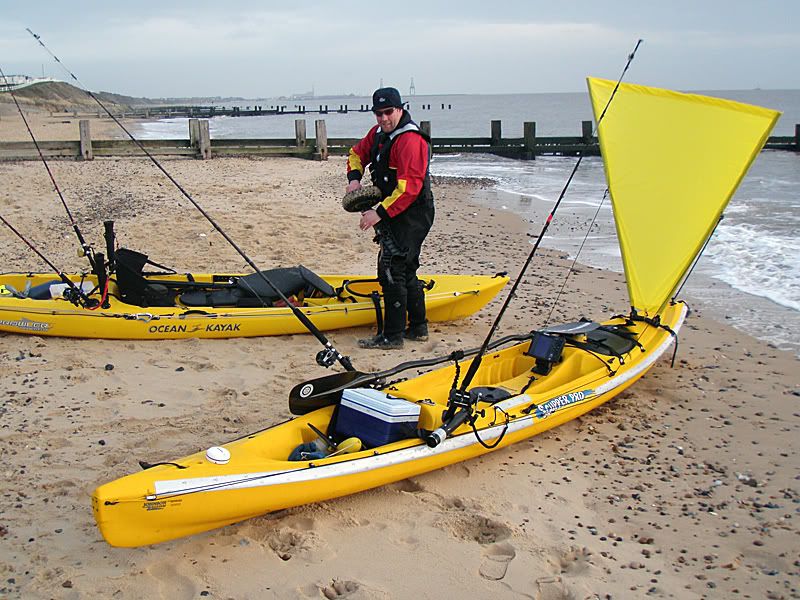
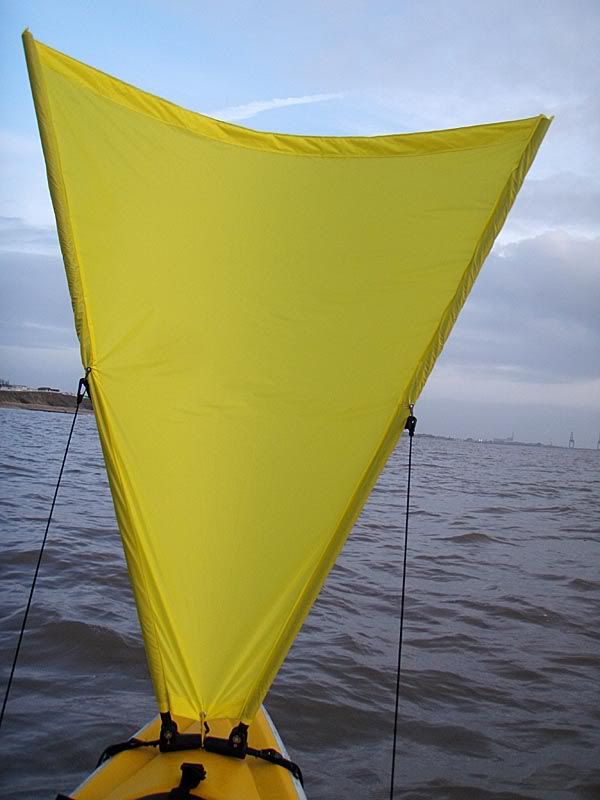
The weekend that followed couldn’t have been better for some proper tests. I had to drop some friend’s children about a mile south from my house and, with a southerly wind, southerly swell and a tide that was ebbing from south to north it couldn’t have been better! I dropped them, dumped my van and took the kayak down to the beach. It was a stiff wind, force 5 gusting 6, and the sea was pretty wild with a 3-4ft shore break. I still managed speeds of up to 6mph with it.
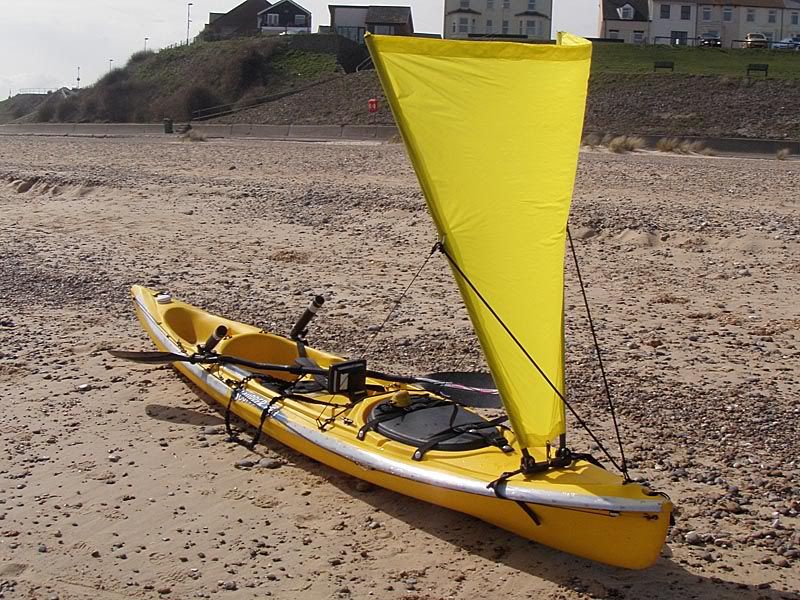
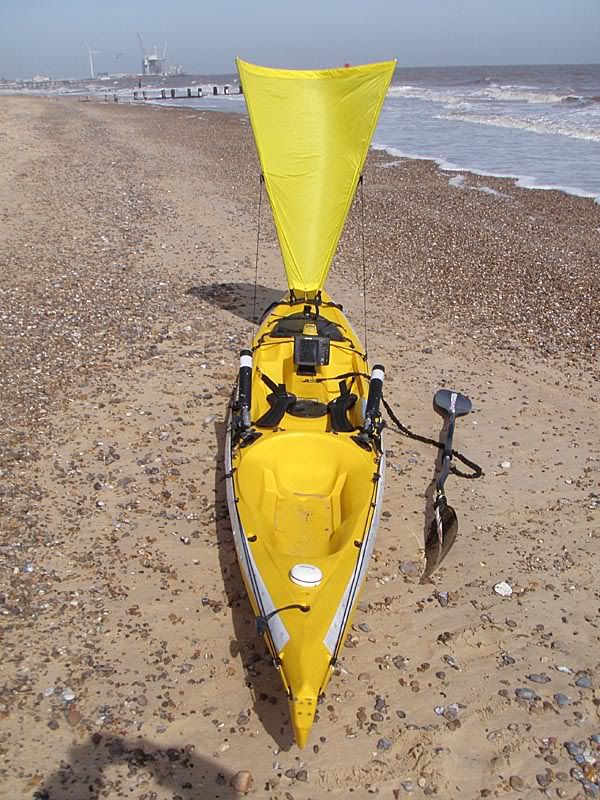
I had never considered the 1 metre sails before as I figured they’d require a very strong wind to propel kayaks my length and would therefore be even more restricted than my old 1.5 metre sail. However I have since changed my mind completely on their suitability for myself and for fitting to fishing kayaks. Granted, they’re a smaller surface area and won’t send you downwind at white-knuckle speeds but with fishing equipment aboard that’s not a criteria I require and in normal, fishing-strength winds, the speed attained is more than adequate to take me out or bring me in again.
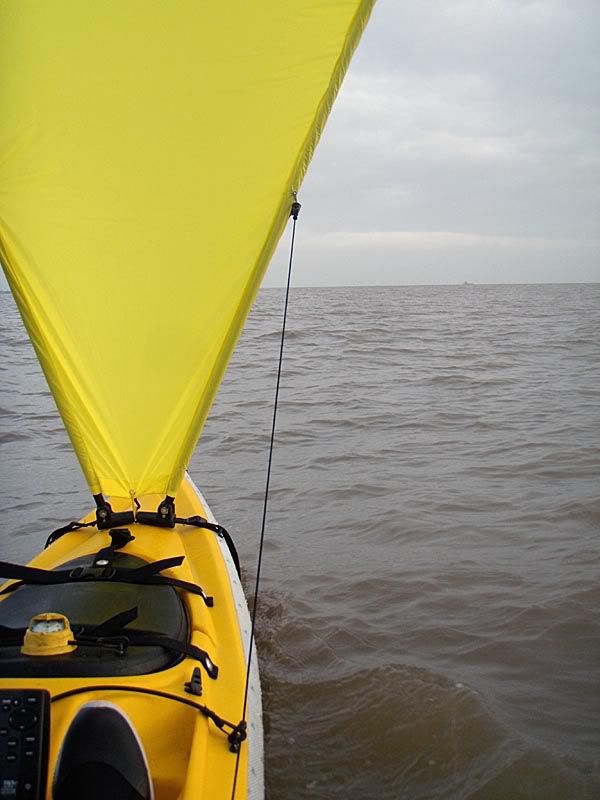
The main consideration though is in the length of the mast poles which project into the cockpit less than the others (about level with my feet) and do not encroach on the available working space. As such this has encouraged me to fit the sail on every trip since and therefore use it more even in conditions that I’d not previously have bothered to take it out for.

I’ve been fortunate recently though as I’ve had some rather more extreme conditions arise which have given me the opportunity to really put the sail through its paces and get used to using it on my Scupper Pro, namely force 5 south easterlies. A force 5 south easterly wind here makes kayak fishing in the sea a non-starter. It’s choppy, swelly or both depending on the state of the tide and is really uncomfortable at anchor. Paddling is exciting and not for the faint hearted on the ebb and not a great deal better on the flood. Of course it’s an ideal time for sailing along the coastline and this I did in company with other kayak anglers who had no experience of sailing kayaks in general nor Pacific Action equipped ones in particular. Both took it in their stride and arrived on the beach at the other end converted to sail power and with enough skill absorbed to be able to handle a pretty strong crosswind and a big sea – a sea, incidentally, bigger than either of them had experienced before.
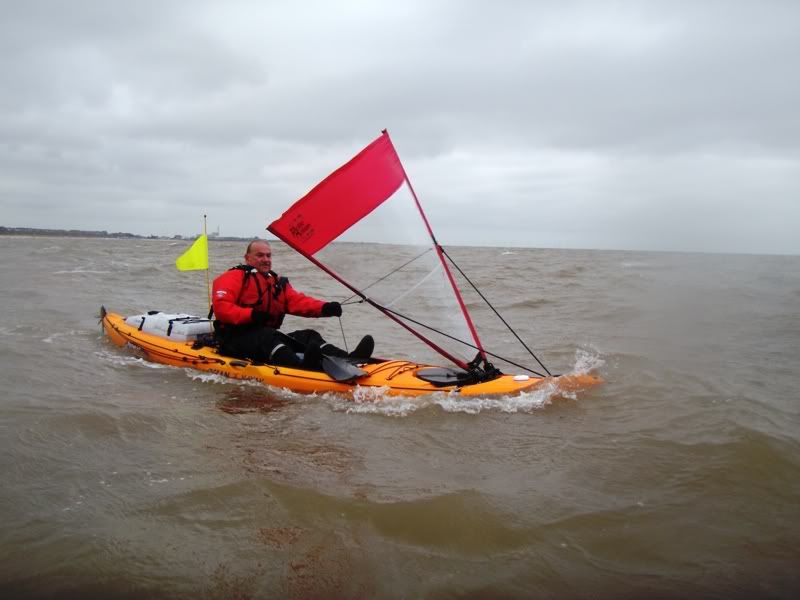

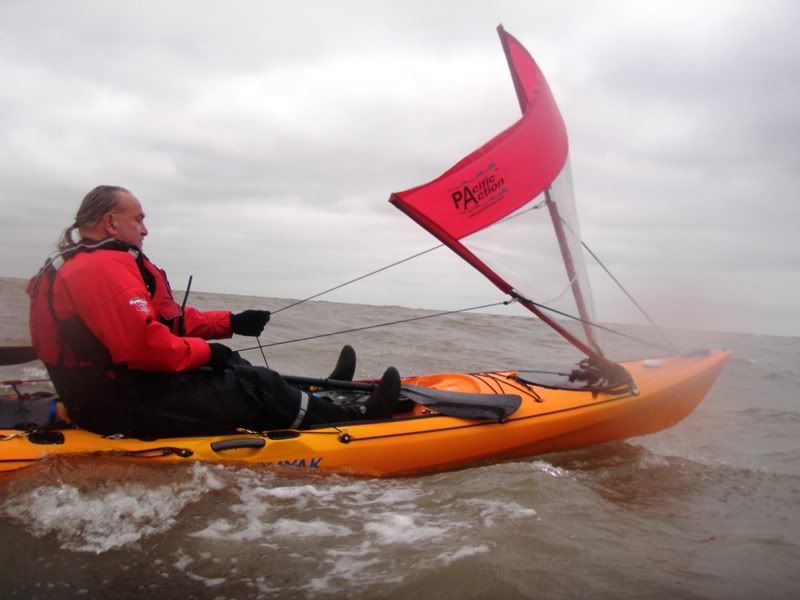
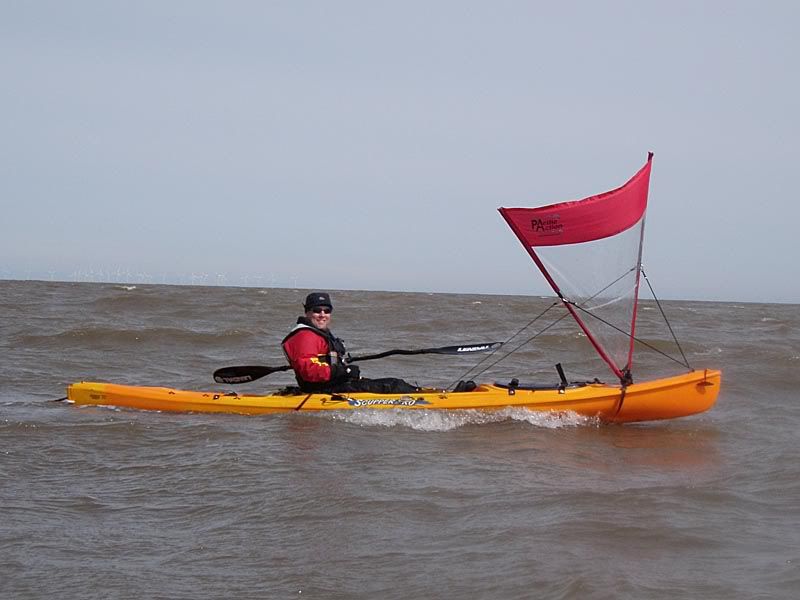
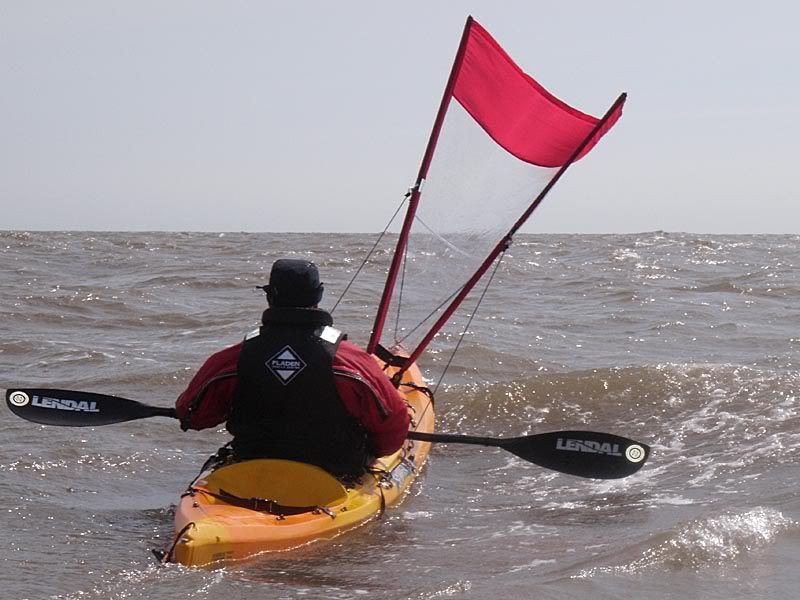
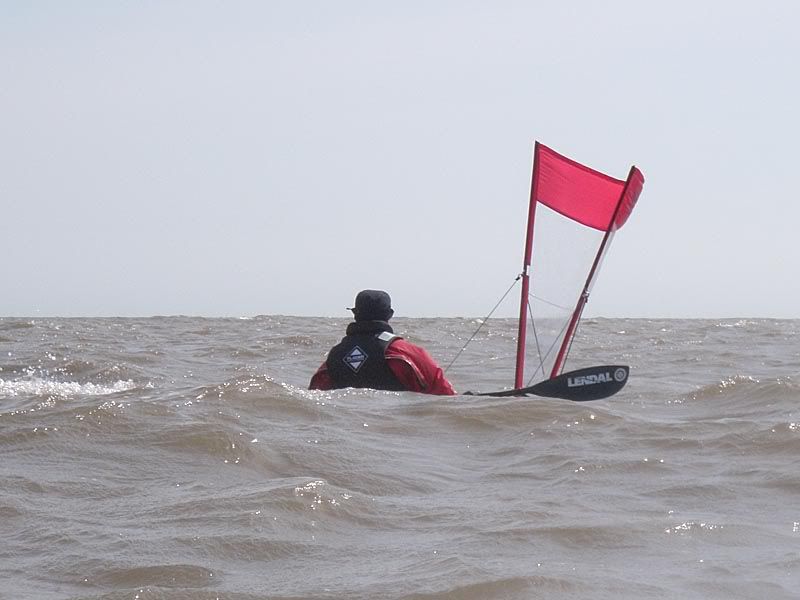
That’s the anecdotal side of things from my own experiences. Next is a look at the sails themselves – how they are constructed, fitted and operated with a look at both the current and future versions. I have mine rigged differently to the suggested method and the kayak modified to suit but I would recommend setting the sail up in the stated manner initially before considering modifications to suit personal preference.
The Pacific Action sails come in three sizes. The smallest, which weighs 1.5kg and has a sail area of 1 square metre, is designed for use with small to medium kayaks while the largest 2.2 square metre model, weighing in at 2kgs, is intended to be fitted to double kayaks or large canoes. In between there is the 1.9kg 1.5 square metre sail which is the size most suited to turning a standard sized (11-18ft) sit-in or sit-on kayak into a sail-powered one. This size gives a good sail area without being overly tall which could lead to stability issues in high winds and so it was my first choice and a very good choice it is too if kayak sailing is the main priority; for a bit of sailing while out for a fishing session the less obtrusive 1m sail is the better option.
All the sails are manufactured from a mixture of stainless and nylon fittings for corrosion resistance, spun fibreglass poles for lightness, rigidity and strength, Ripstop 210 polyester for strength and durability and clear vinyl for the window panel. The poles themselves fit into mast feet which are made from shaped blocks of glass-reinforced nylon which hold the masts in position while seating themselves in alignment with the deck of the kayak.
To begin with the sail comes in its own bag as a collection of parts. The sail itself, the poles (four or six depending on the model), the mast feet and the rigging pack. Inside the rigging pack are a selection of cords, shock cord, strap eyes, screws, clips, shackles, rivets, inline jam cleats and cable ties. Together these parts combine all the necessary hull and sail fittings and can be fitted in well under an hour with only a drill, screwdriver, rivet gun and pair of scissors required. It is possible on many kayaks to discard many of the anchor points and utilise existing fittings to avoid drilling further holes but attention must be paid to the location of the mast feet as this can reduce the efficiency or compromise the integrity of the hull.
Fitting is easy, especially as comprehensive guidelines are supplied. The suggested route of clipping the front shockcord to the carrying handle of the kayak is simplicity itself and doesn’t force the drilling of holes to fit additional deck furniture. Next comes the attachment of the mast feet and this is done by measuring then screwing or bolting anchor points to the topside of the hull. RThe nylon webbing fitted to the mast feet is then threaded through these and back through ladder lock buckles before being tightened off accordingly. The last thing to do is feed the control lines through the supplied hooks and clip these off to strap eyes on the gunwhales of the kayak. This forms a loop of line through which steering is accomplished by pulling the lines left or right and locking off with inline cleats if desired. I made an alteration here and cut the line centrally, feeding the line through clam cleats and terminating to a clip behind the seat that doesn’t allow the sail to fly to far forwards. This arrangement allows me to lock off the sail and run pretty much hands-free on the occasiosn when I’m not using my hands to continually ‘feel’ the sail into position on the wind. My only other alteration was in making the shock cord and lines quick release by terminating the ends with clips that allow the sail to be removed quickly and used on another kayak with different length lines.
To operate the sail, which is initially furled, is released and flips upwards under the tension of the shock cord attached to the bow anchor point. As it goes up it releases the sail which spreads the bars at the same time so that a V shape is formed upon it reaching its position. If already positioned on the wind it takes fractions of a second for the sail to begin propelling the kayak forwards. The sail works well downwind, especially when adjusting the trimming line to make it asymmetric (thus stabilising the sail) but is also useful for sailing across the wind which I personally find more fulfilling. To do this best the sail shape needs altering and by bringing one mast down and inwards, to whichever varying degree works best, the kayak will move efficiently forwards, the sideways thrust being easily converted to forward motion.
Sailing with this is, quite frankly, easy! Jump in, raise the sail, pull it until it works and away you go...pull a bit more to go somewhere specific, perhaps rudder with the paddle or paddle as well to assist...it takes minutes to get the initial feel for it and after a couple of hours competence can be attained attained.
In terms of stability I’ve yet to capsize under sail and have pushed things a bit -with no keel the kayak tends to blow sideways rather than over but of course a broaching wave and a gust of wind could tip the balance. So, what happens if the kayak does go over? Firstly, if you tip off with the sail up it should fall off the wind. That’s the theory, however it is advisable to be leashed to the kayak to ensure that it doesn’t get away as it is still at the mercy of the wind, waves and current and could outpace a swimmer quite easily. Mostly, however, coming off under sail should see the kayak capsize. Here the sail will act very much like a sea anchor and arrest the movement of the kayak. It is difficult to raise the kayak against the pressure of the water on the sail so it is advisable to close and furl the sail first if at all possible, not least to avoid the sail catching the wind as the kayak rolls up again. Furling the sail when it’s in the water is not as difficult as it sounds and can be accomplished easily enough. Right the kayak as normal and then climb aboard again. Of course this is only relevant to sit-on-tops or wet exits from sit inside kayaks - rolling is very unlikely with one of these fitted, especially if unfurled.
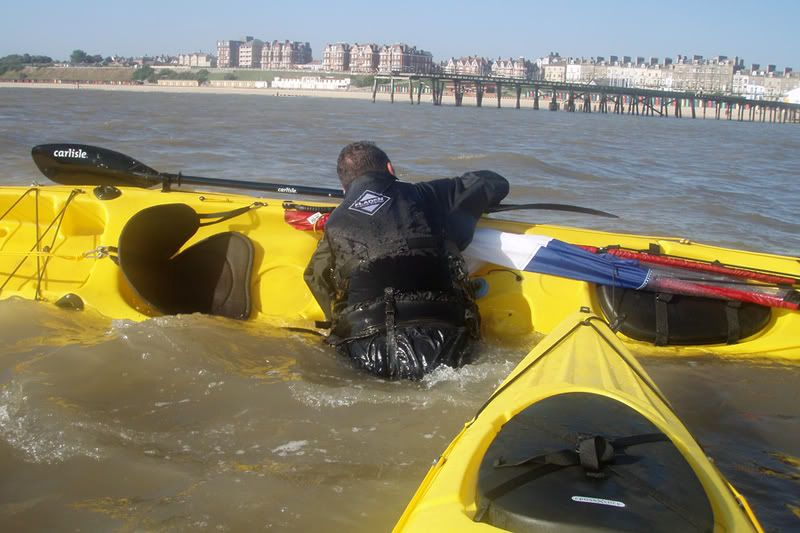
Overall I’ve always enjoyed my sail; it’s enhanced my time on the water and been another option when fishing has been abandoned and has allowed me to make trips that I would not have attempted otherwise. I’ll leave this with some video that includes a fair bit of sailing while fishing...